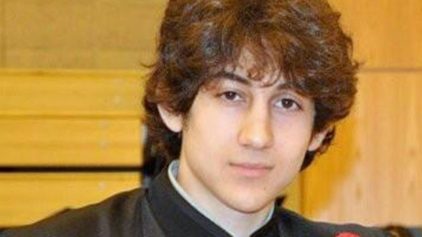
Is Dzhokhar Tsarnaev white?
While the answer to that question may seem like it doesn’t concern Black people, when you dig a little deeper and consider the work done by researchers from Northwestern and Harvard, you see how the question has a profound impact on what happens to Black people when they stand in a courtroom facing a long row of white jurors—a scenario faced by Black defendants on a daily basis across the U.S.
Dzhokhar and his brother, Tamerlan, who is now dead, both hail from the Caucasus region, the area that includes the countries of Armenia and Georgia and that separates Europe and Asia. It is the region where the word “Caucasian” comes from, though historically it was part of the Iranian world until it was conquered by the Russian Empire at the beginning of the 1800’s.
Tsarnaev, an ethnic Chechen, is accused of setting off the bombs at the finish line of the 2013 Boston Marathon that killed three people and injured more than 260 people. If convicted, he faces execution.
In the leadup to Tsarnaev’s trial, researchers Nour Kteily of Northwestern University and Sarah Cotterill of Harvard attempted to find out how it would affect the 21-year-old Tsarnaev if white people did or didn’t view him as a white man. What they found was that when white people were asked whether Dzhokhar was white or not, the less white they perceived him to be, the more harshly they were willing to punish him.
It is a phenomenon that legal experts have been aware of for many years concerning Black defendants, which is why attorneys fight so hard to find Black jurors when their clients are Black—and why prosecutors fight so hard to exclude them.
Just hours after the FBI released photos of the suspects in the Boston marathon bombings, Kteily and Cotterill, along with three other colleagues, set out to ask 426 white Americans a series of questions assessing their “ideological orientations.” Their findings were published last year in the journal Personality and Social Psychology Bulletin and summarized in a piece they wrote in Friday’s New York Times.
After they were clear about where their research subjects fell on the ideological spectrum, eight days later they showed them FBI photos of Dzhokhar and Tamerlan and asked the subjects how “white” they looked.
What the study was testing was whether the white people would see the brothers as more like “us” or more like “them,” the researchers wrote in the Times.
Then the white research subjects were asked whether they endorsed statements such as “I hope the perpetrator of the Boston Marathon attacks rots in hell” and “It is O.K. for Tsarnaev not to have been read his Miranda rights before interrogation” and “We shouldn’t rush to judgment in bringing the perpetrator of the Boston Marathon attacks to justice.”
They also were asked what kind of sentence Tsarnaev should receive if found guilty. The options ranged from “a maximum of 20 years in prison with the possibility of parole” to “the death penalty.”
The researchers found white people were not quite sure whether they should label the Tsarnaev brothers as white. On a scale from zero (nonwhite) to 100 (white), the responses ranged from zero to 100, with the average around 64.
The researchers found that the participants who scored high in social dominance orientation (believing that some groups are superior to others) and high in right-wing authoritarianism (believing in the importance of following traditions and respecting authorities) were less likely to perceive the Tsarnaev brothers as looking white, steering them into “outsider” territory.
The researchers also found that the lower individuals rated Tsarnaev as looking white, the more willing they were to punish him severely.
“In a case like Mr. Tsarnaev’s, where guilt is widely presumed and where the outcome will most likely fall on one side of the line between life imprisonment and death, this finding seems especially relevant,” the researchers wrote.
The researchers are pushing for the criminal justice system to start using jury screening questionnaires to measure a potential juror’s ideological beliefs, so attorneys will know whether that juror would be more likely to put non-white defendants in the “us” or “them” categorization.
“In an increasingly multiracial world, trying racially ambiguous defendants will become only more common,” they wrote in the Times. “Just as we ask potential jurors questions like ‘Do you go to church?’ we need to ask questions like ‘Is having a decent respectable appearance still the mark of a lady?’ (one of many questions used to gauge right-wing authoritarianism) and ‘If certain groups of people ‘stayed in their place,’ would we have fewer problems?’ (social dominance orientation).”
Such questionnaires, while helping attorneys and judges in the cases of “racially ambiguous defendants,” would also go far in checking whether Black defendants are likely to have their fate determined by how the jurors see the world, rather than just considering the facts of the case.
